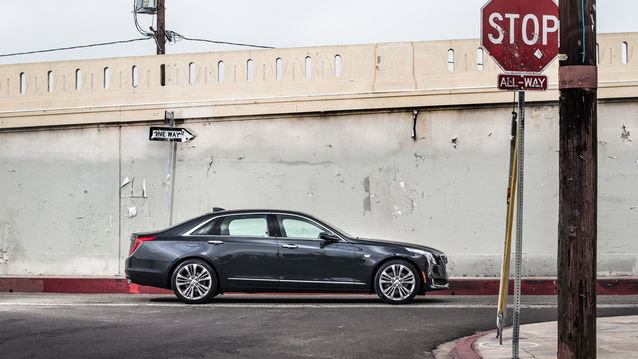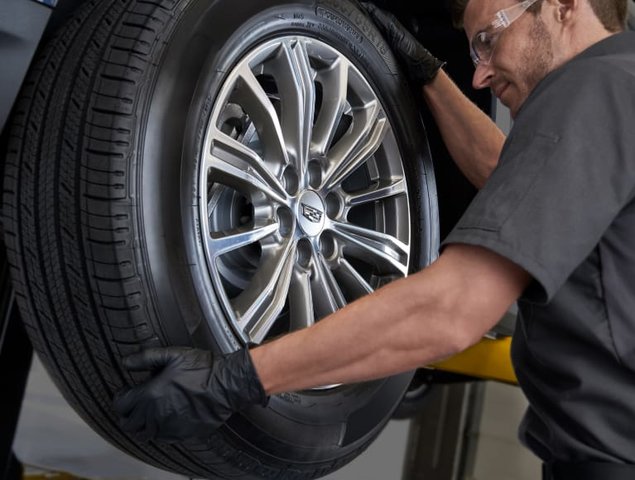The self-driving car is a technological dream that has fascinated motorists since George Jetson was around. For the most part, early driver assist systems were too restrictive – they only let you take your hands off the wheel briefly and were more of an automotive parlour trick than a life-bettering assist.
The one massive exception to this rule was Tesla‘s Autopilot system, which was a headstrong and cavalier approach to such systems. The Tesla could change lanes, cruise on the highway and be used in a traffic jam. But drivers soon found the limitations of Autopilot were curvy roads, overly bright sunshine, and difficulty noticing semi-trailers. Hardly the safest but easily the most convenient of all the other systems out there, Autopilot had manufacturers playing catch-up for a while. But now, almost without warning, Cadillac announced its Super Cruise hands-free driving assist – and it’s available now, ready to go. Coming completely out of nowhere, this could be Cadillac’s mic-drop moment.
Cadillac bills Super Cruise as the world’s first hands-free driving assist system. This is a monumental claim, but they’re half-right. While it’s true, uninterrupted hands-free driving was possible with Tesla’s Autopilot – but buried in the fine print was a clause that the driver had to keep their hands on the wheel at all times. The car and the company simply didn’t initially enforce this. Cadillac’s system is the first one that actually allows and encourages the driver to take their hands off the wheel and relax.
The other large breakthrough and difference between Super Cruise and other systems, is that while most systems are reactive, Cadillac’s system is actually predictive. Like every other system, the Super Cruise-equipped CT6 uses a plethora sensors to view the world around it. But Cadillac spent over three years LiDar mapping over 336,000 kilometres of roadways in the U.S. and Canada – in Canada specifically, 80,000 kilometres have been mapped. These LiDar scans provide inch-perfect views of the roads that the car’s computer processes and uses in conjunction with the real-time sensors to read the road and pilot the car. It knows when turns are coming up and will slow you down if necessary and will resume your set speed after the turn. But now, now we get to the caveats.
The Super Cruise function can only be activated on what GM calls “limited access highways.” This essentially just means divided highways with off-ramps, on-ramps, no traffic lights, and no pedestrians. These are the roadways that Cadillac has mapped and they’re constantly re-driving and updating the scans to account for construction work, and road re-routing. Once the car senses that you are on a road that has been mapped and that weather conditions are good enough, a green light appears on the dashboard and you can activate Super Cruise through a button on the steering wheel.
Once engaged, Super Cruise controls the gas, brakes, and steering. It can be set to cruise as fast as 128 km/h, though you can put you foot down manually to go even faster if you wish. With your foot down, the system will allow travel up to nearly 145 km/h – if you feel like taking your chances with your local police department. The system also flawlessly works in stop-and-go traffic, and takes the hassle out of traffic jams. All it asks in return of you is that you keep your eyes on the road.
That’s right – even though the car is driving itself with the system engaged, you as a driver must be ready to take over at any time. The car uses a small camera mounted on the steering column to track when your eyes are on the road and when they’re wandering. Depending on the speed you’re travelling, you’re “allowed” to look away for between four and 11 seconds. The faster you go, the shorter you can look away from the road.
This sounds tiring and before I used the system, I was ready to call this more annoying than “normal” driving. But I had the chance to drive the car some 1,700 kilometres from Memphis, Tennessee, through Dallas, Texas, and on to Santa Fe, New Mexico. In that time, I had to chance to drive it on open desert roads, clogged downtown expressways, blazing sunshine, pouring rain, and pitch-black night.
Initially, letting go of the steering wheel at speed feels akin to throwing your oars away while kayaking. It’s something we’ve been told not to do from the day we started driving. But after the initial fear and apprehension wears off, it’s a revelation. I rested my arms across my chest and listened to my favorite music while cruising effortlessly across the States. If I tried to send a text or take a photo while moving, the green light on the steering wheel flashed to remind me to keep my eyes on the road.
Continue to ignore it and the warnings get more aggressive and eventually flash red. If still you remain inattentive, the car will assume that you’re having a medical emergency and stop you in the middle of your lane of travel. That’s not safe, but neither is a car going down the road at 120 km/h with someone having a stroke behind the wheel.
In the real world, Super Cruise dealt with rain and darkness well. As long as it’s not raining hard enough to leave large standing puddles on the road, Cadillac says the system should remain functional. It’s use in snow however, isn’t very good. Snow will clog up the sensors and cover the lane markings. But honestly, if the conditions are that bad, you shouldn’t be using Super Cruise anyways.
There were a few times, however, when I had to intervene, and one time when it prevented a big accident. Firstly, the system isn’t good at “seeing” road cones. So if road workers have temporarily coned-off a lane of traffic, the system would drive you right into them unless you intervene. That needs work. It also isn’t very good at braking after someone aggressively cuts you off. Normally, the system detects when a car ahead of you is slowing and applies the brakes as needed but when someone jabs in front of you, the system can’t react quick enough and you have to intervene to keep from rear-ending the jerk.
That said, there was a moment when I was driving along a stretch of Texas interstate. In the distance ahead was a car on the shoulder with its flashers on. Honestly, I should have moved a lane over to give him more space, but shoulders in Texas are about 10 feet wide and there no pedestrians around the vehicle. I reached down to change the radio station and as I did, I was flung into my seat with the force of full ABS braking. In that moment, our intrepid driver on the shoulder had chosen – on an otherwise nearly deserted highway – to pull into the lane. If I was driving without Super Cruise or some form of adaptive cruise control, the resulting collision would not have been good.
That critical situation came about because of poor planning on my part. But that’s what I realized about the system – Super Cruise is a technological marvel. It really works, but it’s also flawed and has limitations. That said, human driving is also flawed, but the two working in conjunction makes driving easier and safer than it ever has been.









